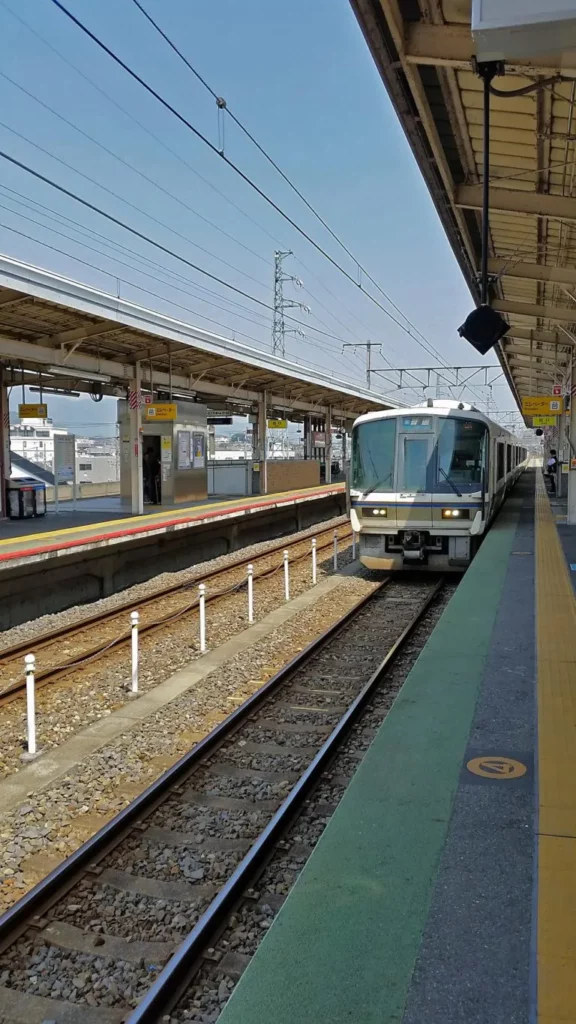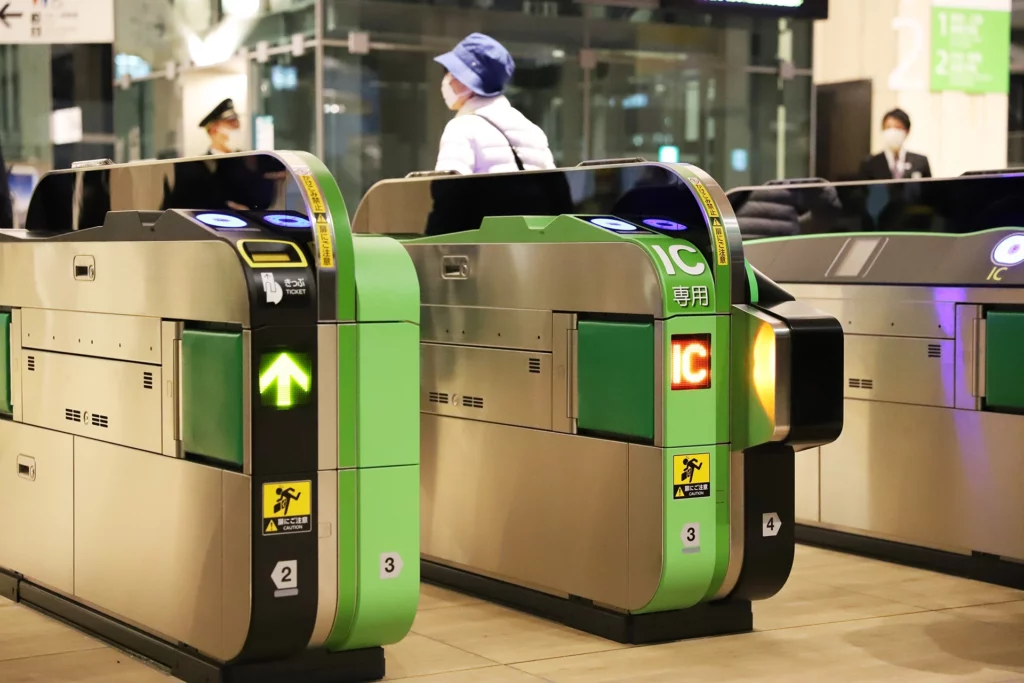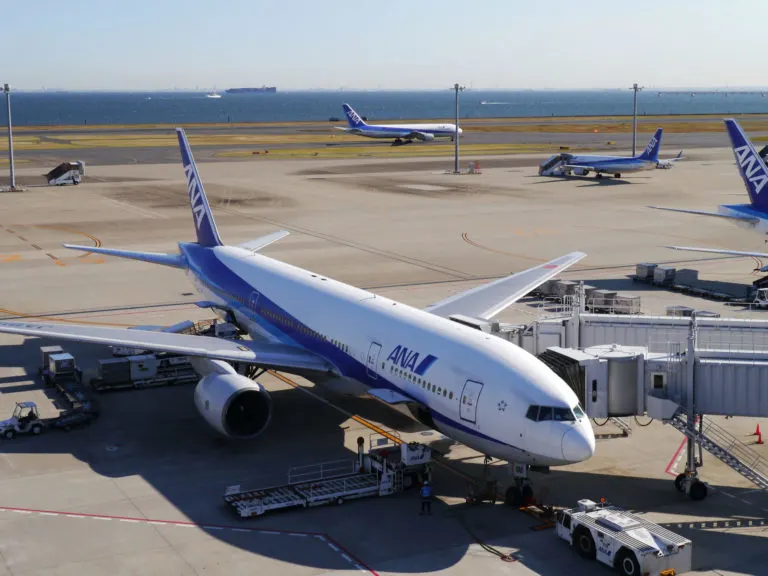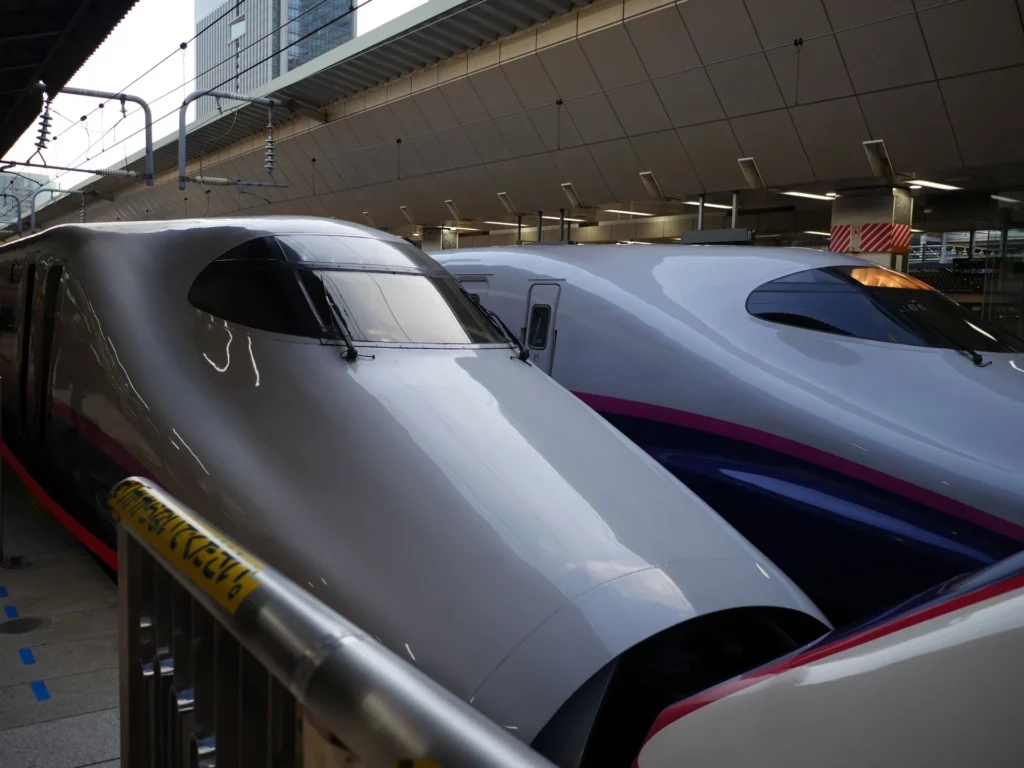Tokyo is a vast city. Luckily, thanks to the good public transport, you can quickly reach all corners of the city.
What makes it a little complex, especially for first-time visitors, is that it is operated by several different companies. In the capital, 12 different operators work together to provide a comprehensive network of trains and subways.
On our first trip, we arrived unprepared and therefore jumped on the wrong train. He took us to our destination but we still had to pay a supplement.
To spare you surprises like this, we have prepared this comprehensive guide about Tokyo’s Public Transport.
Quick Summary

Best Discount Passes for Public Transport in Tokyo
Tokyo Subway Ticket
The best discount pass for visiting Tokyo.
This is the pass that we recommend when you’re visiting Tokyo and won’t be doing any day trips. With the pass, you can use all 13 metro lines (those operated by Toei and Tokyo Metro).
The pass is available for a duration of 1, 2, or 3 days. (1 day: 800 JPY, 2 days: 1200 JPY, 3 days: 1500 JPY) Children pay half the price. The 1-day ticket is valid for 24 hours starting from the moment of first use, the 2-day ticket for 48 hours, and so on.
Fares of single rides start at 180 JPY and go up depending on the distance you travel. While the one-day pass may be a little overpriced, you will likely save money with the 2-3-day variants.

How to buy
We have always bought ours online through Klook. You will then receive a QR code that you can use at the tourist-friendly ticketing machines to collect your pass. These machines (pictured above) can be found in all major metro stations.
It’s also possible to buy the pass at the airport and at manned counters found in most major metro stations. As the pass is only available to foreigners you will need to show your passport at the time of purchase and have a short-term stay visa.
You may also get them from selected electronic stores and at tourist information centers. (here also you will need to show your passport)
Buy on Klook:
Tokyo Subway Ticket
Tokyo Metro or Toei one-day pass
Both metro companies have 24-hour passes of their own. These passes are valid for 24 hours after first use and can only be used on their own metro lines. They are somewhat cheaper than the combined 1-day pass (Tokyo Metro: 600 JPY / Toei: 700 JPY) but as they aren’t available for multiple days they don’t offer the same value.
How to buy
These passes can be bought from the automated vending machines.
JR Tokunai Pass
This is JR’s Metropolitan Pass. With the pass, you can ride all JR trains in Tokyo The pass is only valid for non-reserved seats in ordinary cars but most JR lines in Tokyo are just that.
JR Lines, particularly the Yamanote Line, are very convenient for visiting Shibuya, Shinjuku, and Akihabara. However, whenever we are in Tokyo we find ourselves riding more with the metro than with JR trains.
The Tokunai Pass costs 760 JPY and the pass is valid for one calendar day. On JR’s website, you can see a map of the coverage area.
Tokyo Disney is just outside the area. It is one more station further on the Keiyō Line.
How to buy
The pass can be bought at the ticket vending machines in the train stations. You can purchase the ticket in advance. When you’re purchasing the ticket you will be asked when you want to use it.
Tokyo 1-day ticket
This is the combination of JR’s Tokunai Pass with the Tokyo Subway Ticket. You can ride all metro lines (Toei & Tokyo Metro) and the JR lines in the metropolitan area. (under the same conditions as the Tokunai Pass)
In addition, you can also use some other Toei lines such as the vintage Tokyo Sakura Tram and the Nippori-Toneri Liner, as well as all Toei busses.
At 1,600 JPY this pass is heavily overpriced and it’s highly unlikely that you will get any savings from it.
How to buy
The pass can be bought at the ticket vending machines in the JR train stations.

JR Tokyo Wide Pass
The best discount pass for visiting Tokyo when making day trips.
If you plan on making day trips from Tokyo to for example Mt. Fuji or Nikko you can consider taking a Tokyo Wide Pass. The pass is valid for 3 consecutive days and comes with unlimited rides on all JR trains in Tokyo and the wider Kanto region.
Seat reservations, limited express trains, and Shinkansen are also covered with the exception of the Tokaido Shinkansen.
Moreover, there are also some very interesting non-JR trains included:
- The Fujikyu Railway to the Fuji Five Lakes region
- The Tobu Railway between Nikko and Kinugawa Onsen and Tobu limited express trains that run from Shinjuku to Nikko and Kinugawa
- The Tokyo Monorail to Haneda Airport
- ..
On JR’s website, you can find out all the details of the coverage area.
The price of this pass has also gone up along with the price of the JR Pass. It now costs 15,000 JPY instead of 10,000 JPY.
How to buy
The pass can be bought online from Klook or on the JR-East Website. The pass is only available to foreigners so you will need to bring your passport when you pick up the pass.
Klook: you can collect your pass at the JR East Travel Service Center in Ueno Station. Outside of opening hours, you can use the vending machine.
JR-East Website: You can collect your pass at JR Travel Service Centers in several major stations across Tokyo. Normally you should be able to use the JR vending machines but so far we never managed to correctly scan our passports on these machines.
You can also buy the pass at the JR Travel Service Centers. Remember to bring your passport!
Buy on Klook:
JR Tokyo Wide Pass
JR Pass (nationwide)
Despite the huge price surge in October 2023 the pass can still offer value to those who will visit several parts of the country and make extensive use of the Shinkansen.
You certainly do not need the pass if you will only stay in Tokyo, but if you will also go to Kyoto and Hiroshima, for example, it may be useful to see whether you will save money with the JR Pass.
You can then also use this pass in Tokyo and may no longer need another pass.
How to buy
The pass can only be bought online. You can order it directly from JR or through online travel agents such as Klook and Japan Experience.
JR: If you order it at JR’s website you can do so at most 1 month in advance. From the moment you have ordered your pass you can already start making seat reservations. JR doesn’t issue vouchers, all you need to collect your pass is your passport.
Klook / Japan Experience (and other online travel agents): You can order your pass up to 3 months before you arrive in Japan. You will receive a voucher that you need to exchange for the pass. When you exchange the voucher you can indicate a start date up to 1 month in the future.
One advantage of ordering your JR Pass through Japan Experience is that you can directly add several other useful items such as a local SIM card, a Suica card, and a Tokyo Subway Ticket.

Prepaid Travel Cards (Suica / Pasmo)
The best option to ride all public transport in Tokyo without any hassle.
This is the best option if you don’t think that you will be able to benefit from discount passes.
The Suica and Pasmo card are both IC cards. These are convenient reloadable transportation cards that offer a simple way to pay for your rides on all modes of public transportation.
By loading them with a specific budget, you can easily travel on the metro, bus, trams, JR trains, and even private rail companies. All you need to do is swipe your card and enjoy a hassle-free journey.
Typically, the price of your rides will be equivalent to what you would pay for individual rides, but there’s even a slight discount in some cases. The major advantage, however, is that you can skip the inconvenience of queuing and purchasing tickets separately for each ride.
IC cards can also be used for a range of other services. For instance, vending machines and coin lockers in train and subway stations often accept IC cards as a convenient payment method. There are also some convenience stores where you can use your IC card to pay for your purchases.
The Suica card is issued by JR and can be purchased at JR stations, and the Pasmo card is issued by the local metro and bus company and can be purchased at metro stations.
IC Card FAQ
Where can I purchase IC cards?
They can be purchased at the vending machines in train and metro stations including those at the airport. The ticket machines at the JR station in the airport will issue the Suica card, at the Keisei Skyliner station you can get a Pasmo card.
Most ticket machines accept cash only.
You can also order a Suica card online in advance at Japan Experience and at Klook. Japan Experience will ship the card to your home, the Klook card will be waiting for you at Haneda Airport.
Is there a deposit for the card?
Yes, there is a 500 JPY refundable deposit. While it cannot be used for rides you can get it back if you return the card at the end of your trip.
Is the unused balance refunded at the end of my trip?
Yes, as long as you end your trip in Tokyo you can return the card. When you return it the deposit will be refunded as well as the remaining balance minus a small administrative fee of 200 JPY.
This administrative fee only applies for the Suica card and only when there’s a remaining balance. There’s no fee for the Pasmo card.
Cards remain valid for 10 years, if you think you will return to Japan in the near future you can also keep your card.
How do I use the IC card?
Typically the card will have a small balance when you buy it so that you can directly start using it. Fares are almost always distance-based so you will need to swipe your card twice. Once at the start of your journey and a second time at the end.
At metro and train stations you swipe the card to open the gates when entering and leaving the station. At smaller stations there may be no gates but only a card reader somewhere at the start of the platform.
If you ride the bus you will need to swipe the card when you board the bus through the middle doors and then again when you get off at the front of the bus.
Each time that you swipe your card the remaining balance will be shown.
How to recharge the IC card?
Any ticket machine that displays the IC logo can be used to add funds to your balance. These machines have options in English and provide clear instructions. The process is straightforward. To start, you need to specify the amount you want to add and then insert the bills or coins accordingly. While most machines only accept cash, there are a few rare ones that also allow card payments.
If you find that your balance is insufficient when you want to leave a train or metro station you have to look for the fare adjustment machine.
Where can I use the IC card?
Even though Suica and Pasmo cards are specific for Tokyo they can be used all over Japan. Every region in Japan has its own IC card (eg. Kyoto & Osaka have the Icoca card) but they’re all interoperable.
IC cards are meant for local transport which means that you cannot use them to travel between regions. You can use your Suica card in Tokyo and also in Kyoto, or even to travel between Kyoto and Osaka as both are in the JR West region.
But you can’t use it to pay for the Shinkansen from Tokyo to Osaka. (technically it’s sometimes possible but it is so complex that it is just easier to buy a regular ticket)
Why and when do I need to pay a surcharge when I use the IC card?
IC cards are intended to be used on local trains and cover the base fare of a trip. The base fare is the fare calculated based on the distance of your trip.
Trains running on the city network are typically local trains but if you are going to take trips to places like Nikko this will typically be with limited-express trains. These trains run faster and skip several stations. The fare to use these faster trains is made up of the base fare (distance-based) and a limited express fee.
Another common fee that can be added to a train ticket is the seat reservation fee.
You cannot use your IC card for any of these additional fees. You will need to get an extra ticket from the ticket machines and you will need to swipe it together with your IC card when you enter the station.

Getting to Tokyo From The Airport
Tokyo has 2 international airports. Both airports have excellent access to public transportation, making traveling to the capital easy and fast.
From Haneda Airport
These are your options to get from Haneda Airport to Tokyo:
Tokyo Monorail
The monorail connects Haneda Airport with Hamamatsuchō Station, a station on the JR Yamanote Line. (and also served by the JR Keihin–Tōhoku Line) Japan’s Domestic Airlines have check-in facilities at this station.
A transfer to Tokyo’s metro network is also possible at Hamamatsuchō, the Daimon Station is a short 5-minute walk.
The monorail is operated by a private company but is one of the few routes that is still covered by most JR passes even though it is not operated by JR.
Keikyu Line
This private railway company operates local and several different limited express trains between Haneda Airport and Tokyo. The fastest train offers a direct connection to Shinagawa station, slower trains make extra stops before reaching this station. Shinagawa is one of JR’s major stations in Tokyo and offers transfer to a number of JR lines including the Yamanote Line.
The final stop of the Keikyu Line is Segakuji Station where you can transfer to the Asakusa Metro Line.
From Narita Airport
Narita Airport is situated approximately 60 kilometers outside of Tokyo. Despite its distance, and thanks to the following 2 efficient transportation options, you can reach Tokyo quickly and effortlessly.
JR Narita Express
This train is abbreviated as N’EX and is covered by the JR Pass as well as most of JR’s regional passes for the Tokyo area. (the Tokyo Wide Pass, the Hokuriku Arch Pass, …)
The N’EX train connects Narita Airport with amongst others Tokyo Station, Shibuya, and Shinjuku.
With a valid N’EX ticket, you can transfer to other JR trains to get to your final destination in the Tokyo area. (excluding Limited Express and Shinkansen trains)
Keisei Skyliner
This train is run by a private company and offers a good alternative to the N’EX. Both in terms of price, comfort, and schedule the two options are comparable.
The Skyliner connects Narita Airport with Nippori and Keisei-Ueno (close to JR’s Ueno station).
At both stations you can transfer to a number of JR Lines including the Yamanote Line and Keihin–Tōhoku Line. It is easiest to do this in Nippori as both companies share the same building at this station.
At Keisei-Ueno you can also transfer to the Ginza and Hibiya Metro Lines.

Tokyo’s Train and Metro Operators
Rarely do you find a better public transportation system than in Tokyo.
However, if you want to make optimal use of it, and by optimal I mean if you want to use passes that allow you to save money, you should know who operates which lines.
Each company issues its own passes and these are usually only valid with them.
These are roughly the 3 major categories into which you can divide public transport in Tokyo (not taking into account the buses and trams that we have so far never actually used in the city).
JR (Japan Railways)
JR was the government company until they privatized the railway operations in 1987. Back then the company was split into 6 entities. Officially the company that operates the JR trains in Tokyo is JR East, but everyone just says JR.
JR is still by far the largest train operator in Japan and it’s the company that works with the well-known JR Pass. The pass that you can use to travel all over Japan with amongst others, the fast Shinkansen trains.
When it comes to Tokyo JR operators a number of lines that can get you close to popular tourist sights. The most popular is probably the Yamanote Line which circles the city and connects major districts like Shibuya, Shinjuku, and Akihabara.
Private Rail Companies
JR’s network is supplemented by 9 private companies. Although these all run on their own tracks and have their own stops, they usually offer efficient connections with the JR trains and the metro.
The stops are often in the same buildings or within a short walking distance of each other.
Some of these companies have their own discount passes. For example, Odakyu has a pass that can save you some money when visiting Mount Fuji from Tokyo.
However, even though there are some exceptions, it’s best to assume that your JR pass is not accepted when riding these trains.
Tokyo’s Metro Operators
Finally, there is also the metro. In Tokyo, the metro network consists of 13 lines operated by 2 companies. Tokyo Metro operates 9 lines, and Toei runs the remaining 4.
These companies do offer a joint pass, the Tokyo Subway Ticket, which you can use on all 13 lines.
Leave a Reply